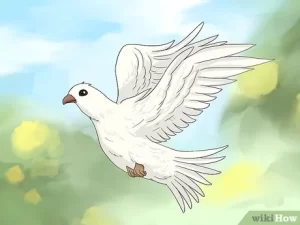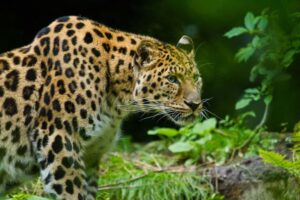
What Animals Eat Grass?
Grass is a ubiquitous part of many ecosystems, providing food and shelter for a wide variety of animals. From large herbivores like elephants to small insects like grasshoppers, grass is a crucial component of the diets of countless species. In this comprehensive article, we will explore the diverse array of animals that consume grass, their unique adaptations, and the importance of grass in their lives.
1. Mammals That Eat Grass
Mammals are perhaps the most well-known consumers of grass, with many species relying on it as a primary food source. These animals have evolved specialized digestive systems capable of breaking down the cellulose in grass, allowing them to extract essential nutrients.
1.1 Ruminants
Ruminants, such as cattle, sheep, goats, and deer, are a group of mammals that have a unique four-chambered stomach adapted for digesting grass and other fibrous plant matter. These animals chew their cud, regurgitating partially digested food from the first chamber (rumen) to be chewed again, allowing for more efficient breakdown of the tough plant material.
1.2 Equids
Horses, zebras, and donkeys are members of the equid family, all of which are grazers that feed primarily on grass. These animals have high-crowned teeth and strong jaws that allow them to graze for long periods, consuming large quantities of grass.
1.3 Other Grass-Eating Mammals
Many other mammals, such as elephants, rhinoceroses, hippopotamuses, and kangaroos, also include grass in their diets. These animals have adapted to their respective environments, consuming different types of grasses and other plant matter.
2. Birds That Eat Grass
While not as commonly associated with grass-eating as mammals, many bird species do consume grass as part of their diet. These birds have adapted to feed on grass in various ways.
2.1 Geese and Ducks
Geese and ducks are well-known for their grass-eating habits. These birds have serrated bills that help them grasp and tear grass blades, and their digestive systems are adapted to break down the cellulose in grass.
2.2 Gallinaceous Birds
Gallinaceous birds, such as chickens, turkeys, and quails, are known to eat grass as part of their omnivorous diet. These birds use their strong beaks to pluck and consume grass blades.
3. Reptiles and Amphibians That Eat Grass
While not as common as mammals and birds, some reptiles and amphibians do include grass in their diets.
3.1 Tortoises
Certain tortoise species, such as the sulcata tortoise and the Russian tortoise, are known to consume grass as part of their herbivorous diet. These reptiles have specialized digestive systems adapted to break down the cellulose in grass.
3.2 Iguanas
Green iguanas and marine iguanas are examples of lizards that include grass in their diets. These reptiles have adapted to consume grass and other plant matter in their respective environments.
4. Invertebrates That Eat Grass
Invertebrates, such as insects and mollusks, also play a significant role in consuming grass.
4.1 Grasshoppers and Crickets
Grasshoppers and crickets are well-known for their grass-eating habits. These insects use their strong mandibles to chew and consume grass blades, often causing damage to lawns and agricultural crops.
4.2 Snails and Slugs
Certain species of snails and slugs, such as the common garden snail and the grey field slug, are known to consume grass as part of their herbivorous diet. These invertebrates use their radula, a tongue-like organ with tiny teeth, to scrape and consume grass blades.
5. Importance of Grass in Animal Diets
Grass is a vital component of many ecosystems, providing food and shelter for a wide variety of animals. It is a rich source of cellulose, which is broken down by specialized enzymes and bacteria in the digestive systems of grass-eating animals. This process allows these animals to extract essential nutrients, such as carbohydrates, proteins, and minerals, from the grass they consume.In addition to its nutritional value, grass also plays a crucial role in maintaining the health and stability of ecosystems. Grazing animals help to control the growth of grass and other vegetation, promoting biodiversity and preventing the overgrowth of certain plant species. This, in turn, supports the overall health and resilience of the ecosystem.
Summary Table: Animals That Eat Grass
| Animal Type | Examples |
|---|---|
| Mammals | Cattle, sheep, goats, deer, horses, zebras, elephants, rhinoceroses, hippopotamuses, kangaroos |
| Birds | Geese, ducks, chickens, turkeys, quails |
| Reptiles | Sulcata tortoise, Russian tortoise, green iguana, marine iguana |
| Amphibians | None |
| Invertebrates | Grasshoppers, crickets, snails, slugs |
For more information on grass-eating animals, you can refer to the Wikipedia page on Graminivores.
FAQ Section
What adaptations do animals have to eat grass?
Many grass-eating animals have specialized digestive systems, such as the four-chambered stomach of ruminants or the strong jaws and high-crowned teeth of equids. These adaptations allow them to break down the cellulose in grass and extract essential nutrients.
Do all animals that eat grass only consume grass?
No, most grass-eating animals are not strict herbivores and may supplement their diet with other plant matter, such as leaves, fruits, or seeds. Some may even consume small amounts of animal matter, such as insects or carrion.
Can humans eat grass?
While humans are not adapted to digest grass, we do consume grasses in the form of cereal grains, such as wheat, rice, and corn. These grasses have been selectively bred over time to produce larger, more nutritious seeds that can be processed into food.
What is the difference between grazing and browsing?
Grazing refers to the consumption of grass and other low-growing vegetation, while browsing refers to the consumption of leaves, twigs, and other vegetation from shrubs and trees. Many grass-eating animals are grazers, while browsers typically consume a wider variety of plant matter.
How do grass-eating animals impact their ecosystems?
Grass-eating animals play a crucial role in maintaining the health and stability of their ecosystems. They help to control the growth of grass and other vegetation, promoting biodiversity and preventing the overgrowth of certain plant species. Their grazing also helps to disperse seeds and fertilize the soil with their waste, contributing to the overall productivity of the ecosystem.In conclusion, grass is a vital food source for a wide variety of animals, from large herbivores to small invertebrates. These animals have evolved unique adaptations to consume and digest grass, allowing them to extract essential nutrients and maintain their health. Understanding the role of grass in animal diets is crucial for conserving and managing ecosystems, as well as for developing sustainable agricultural practices.


